The Thrustmaster T3PA in a few words
Advantages & Disadvantages
✅ Good build quality
✅ 3 adjustable pedals
✅ Compatible with multiple platforms (PC and consoles)
✅ Competitive pricing
✅ Very good value for money
❌ Limited brake feel and realism
ㅤ
For many years now, I’ve been noticing that more and more people are getting into sim-racing. As far as I’m concerned, this is an excellent thing, because we’ll certainly have better products and, above all, cheaper peripherals.
For anyone wishing to embark on this magnificent adventure, you should know that a sim-racing setup consists of 3 essential elements: a base, a steering wheel and a pedal board. With these three peripherals, you’ll be able to race at top speed on rally stages, or chase other F1 drivers on grand prix events around the world.
Overall, we have 4 manufacturers of sim-racing peripherals who offer products for the average man, namely Fanatec, Thrustmaster, Logitech and Monza. These brands certainly make affordable products, but some also offer premium peripherals. Since every rider is unique, what I consider ideal is probably not ideal for you. As a result, manufacturers make available products that are sold separately, such as a crankset or steering wheel. The aim here is to offer solutions for the specific needs of different riders.
In what follows, I’m going to introduce you to Thrustmaster’s T3PA pedalboard. It’s a device aimed more or less at the mid-range segment. I’ll tell you about its features, its strengths and weaknesses, and what I think of it.
Main features and technical specifications of the crankset
- Crankset with 3 metal and plastic pedals
- Large, textured footrest
- 2-axis adjustable pedals
- Rubber stop can be installed on the brake to provide up to 25 kg of pressure
- Different resistance from one pedal to another
- Compatible with Playstation, Xbox and PC
- Dimensions: 24 cm x 36 cm x 42 cm
- Weight: 3.46 kg
Thrustmaster T3PA design
Design-wise, let’s face it: the cranksets all look pretty much the same. The biggest changes are in the number of pedals and materials. As far as the T3PA is concerned, I find its design sober, with a predominantly black color and chrome pedals. It’s a device that’s sure to go well with any set-up, whatever your ecosystem.
The footrest is quite large, with textured rubber to prevent your feet from slipping during a sim-racing session. A small positive point about the T3PA ‘s design is the fact that the Rj45 cable comes out on the side (left or right), which is great for placing the pedalboard against a wall or desk.
Apart from that, the T3PA is a pedalboard like any other in its segment, and there’s not much more to say about its design.
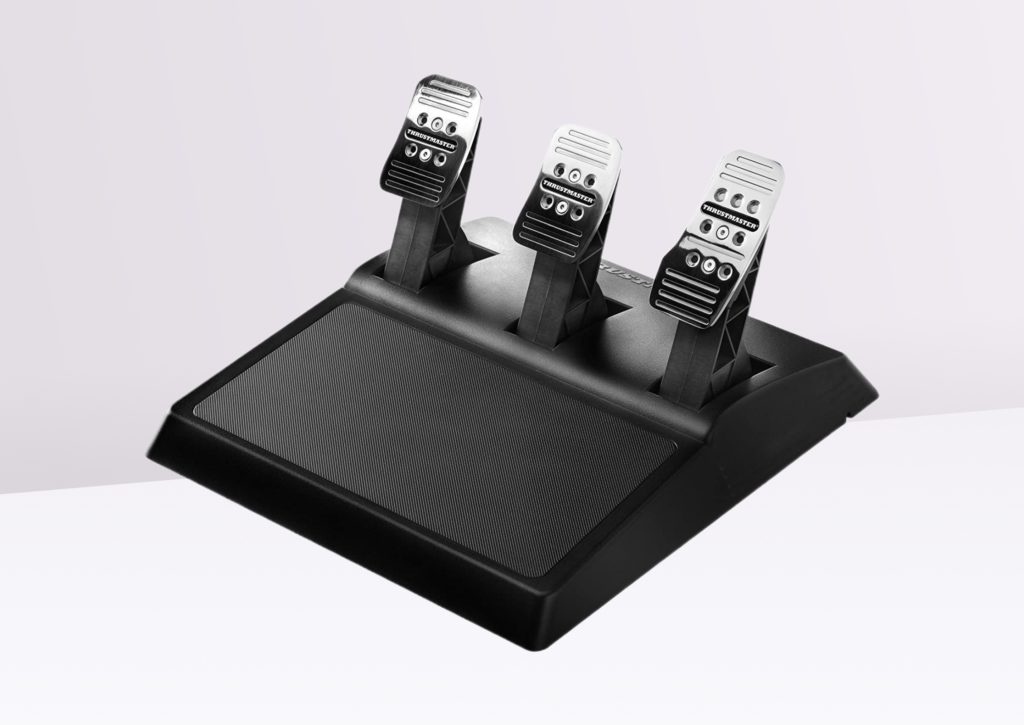
Customized assembly
The T3PA is a mid-range pedalboard and will therefore be used mainly on the floor. To ensure a good grip, Thrustmaster has added rubber pads (3 on top and 3 on bottom), giving it a good grip on virtually any surface (parquet, carpet, flagstone, etc.). However, I’m all for putting it up against a wall or desk so it doesn’t move a muscle.
As far as cockpit installation is concerned, the T3PA offers mounting points (4) for this purpose. However, Thrustmaster has not supplied the screws needed to attach this pedalboard to the chassis. That’s cheap of them, especially when you consider that screws cost nothing at all for such a manufacturer. Otherwise, almost all cockpits on the market support the T3PA, so there’s no problem there.
Manufacturing and finishing
Although Thrustmaster emphasizes the use of metal in the T3PA, it should be noted that this pedalboard is mainly made of plastic. Metal is found on the pedal paddles, which are chromed to boot. Metal is also found in the pedal mechanism, giving it added strength.
Apart from this little clarification, the rest of the T3PA is pretty well finished. Weighing in at nearly 3.5 kilos, it’s quite heavy, but not awkward at the same time. The plastic is well finished, with no burrs or protruding parts. Admittedly, the T3PA is aimed at the mid-range, but it’s still well made for a product that’s not really expensive (under €200).
Thrustmaster has thought of everything with this pedalboard, and has included a kind of channel or groove underneath that allows the T3PA cable to protrude from either the left or right side. I really appreciate this little addition, and it allows the pedalboard to be installed against a wall without the slightest problem.
Getting to know the pedals
As soon as you unpack the T3PA, you go straight to testing the resistance of the pedals. First impressions: the gas pedal and clutch are rather soft, and that’s to be expected. The gas pedal has a resistance of 2.5 kg, the clutch 5 kg and the brake can go up to 25 kg with the stop. For the price, it’s pretty realistic, as long as you don’t ask too much of the pedals.
As for the footrest, it’s wide enough to provide a good surface for your feet. Another positive point is the metal pedals. Well, they’re partly metal, but they’re chromed, and they’re pleasant on the feet. I really appreciate this, as I do most of my sim-racing sessions without shoes.
Sensations during play
Even though Thrustmaster’s T3PA pedalboard is a mid-range sim-racing device, its operation is based on potentiometers to indicate the pedals’ status. Roughly speaking, it works in the same way as joysticks or joystick triggers. It works pretty well, but it’s nowhere near the level of a Load Cell, for example.
In absolute terms, the T3PA gives you a good feeling on the track, allowing you to control the vehicle you’re driving fairly well. The gas pedal is as light as a feather, as it is in real cars, as is the clutch pedal, which is harder. As for the brake pedal, it’s hard, and adjustable too, but the pressure remains the same over the entire distance covered in standard configuration. With the brake stop, you can adjust the hardness as you wish, but it’s still a far cry from a Load Cell or hydraulic crankset, where resistance changes according to the force applied to the pedal.
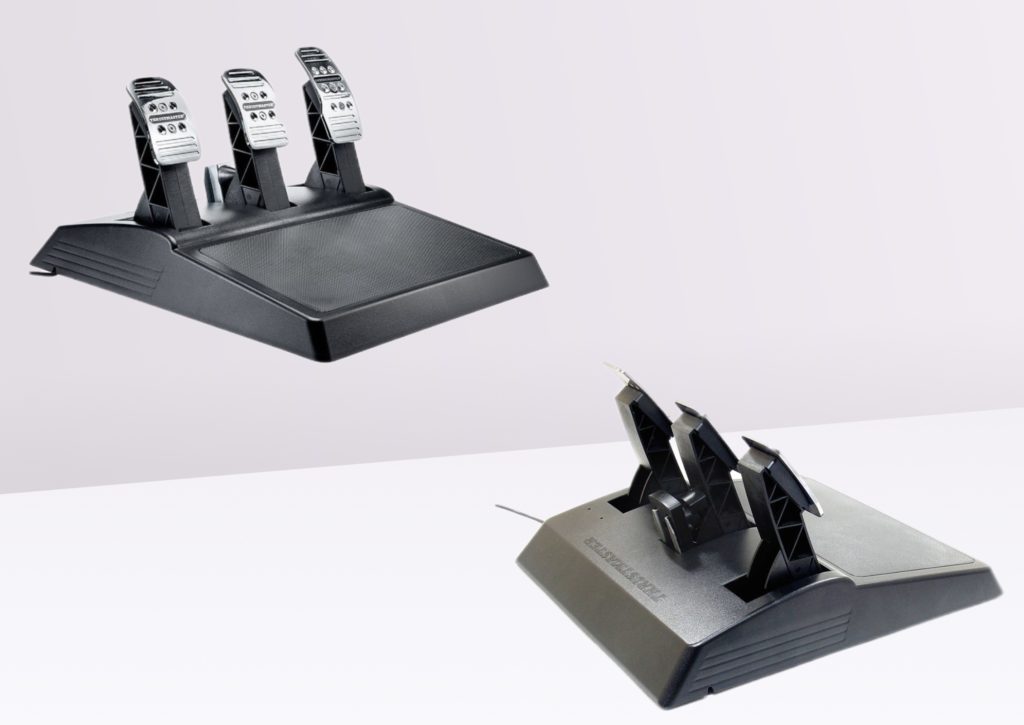
Thrustmaster T3PA compatibility
Aiming to be a pedalboard for everyone, the T3PA is compatible with Thrustmaster‘s entire T Series steering wheel/base range, giving you a wide spectrum of products, whether on Xbox, Playstation or PC. For sim-racing titles or racing games, virtually all will support it, with native compatibility.
As far as cockpits are concerned, most chassis available on the market today provide a slot for mounting the T3PA. However, you’ll need your own M6 screws to mount this pedalboard to any chassis, as these are not supplied with it. It’s cheap of Thrustmaster not to have included screws in the box, but there’s nothing we can do about it.
Value for money
Priced at €139.99, the T3PA is really quite cheap for what you get in return. Sure, the pedals work with potentiometers, but it’s really not bad at all for the price, especially for the sensations you’ll get.
Its value for money is very good considering what’s currently on the market, giving it an edge over the competition. However, you should be aware that this pedalboard is very often out of stock at Thrustmaster , as it is quite old. You can find it on marketplaces for around €175, and even at that price, I think it’s worth it.
My verdict on the Thrustmaster T3PA
Although a little old, the T3PA still offers a good feel for a crankset originally priced at less than €140. The brake stop adds a good level of resistance to a brake pedal that’s basically very linear, giving you more feel in play.
If you’re looking to replace a basic pedalboard or get into sim-racing, I’d recommend Thrustmaster‘s T3PA . It has its faults, but the value for money, feel and ergonomics make it a must-have in its price range. But if you’re not convinced, or are simply curious, I invite you to read my review of the the 4 Best Cranksets for Sim Racing in 2025.

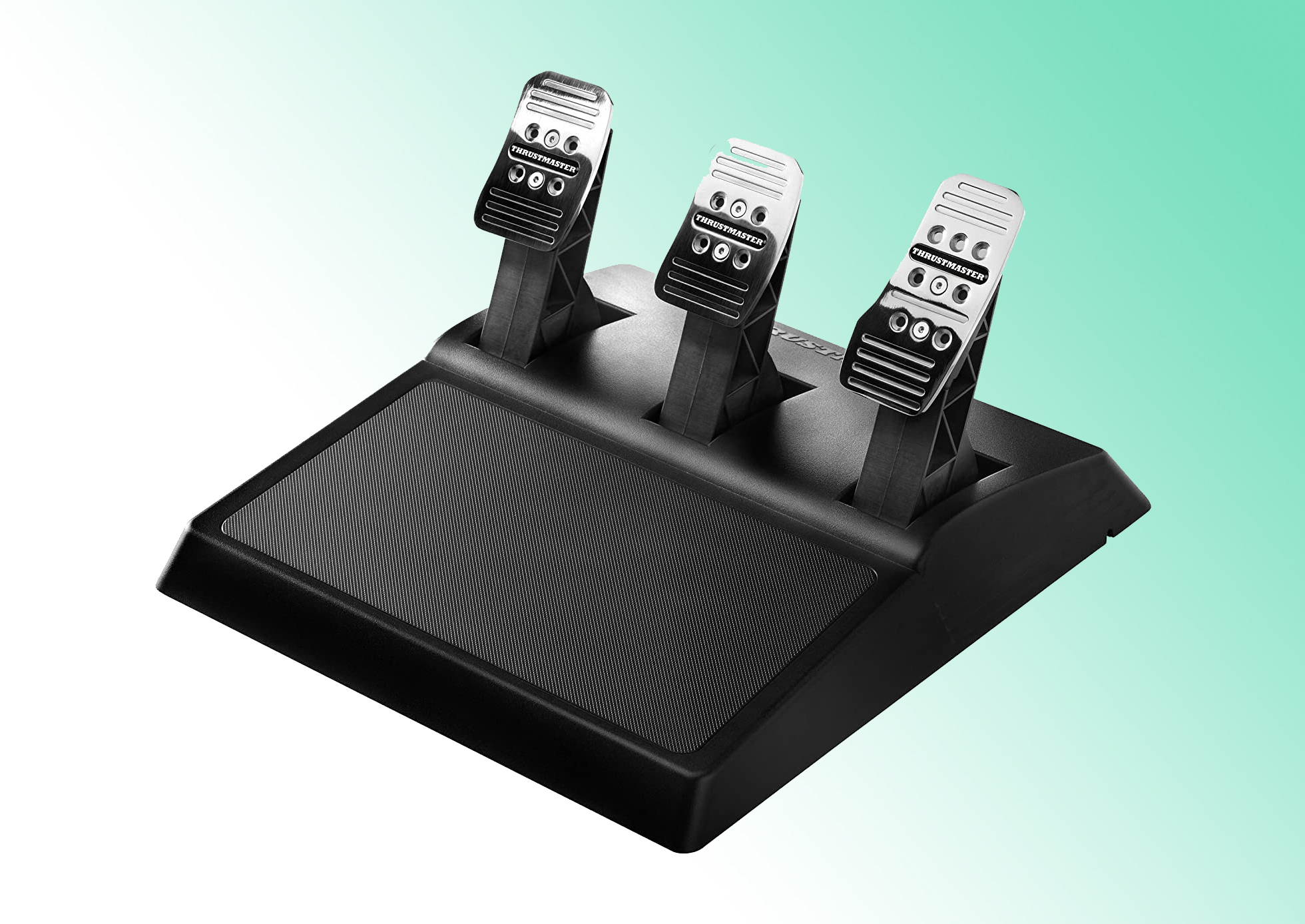
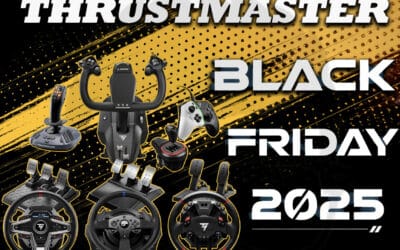


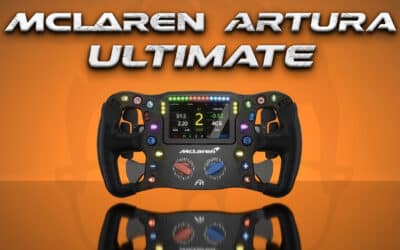


0 Comments